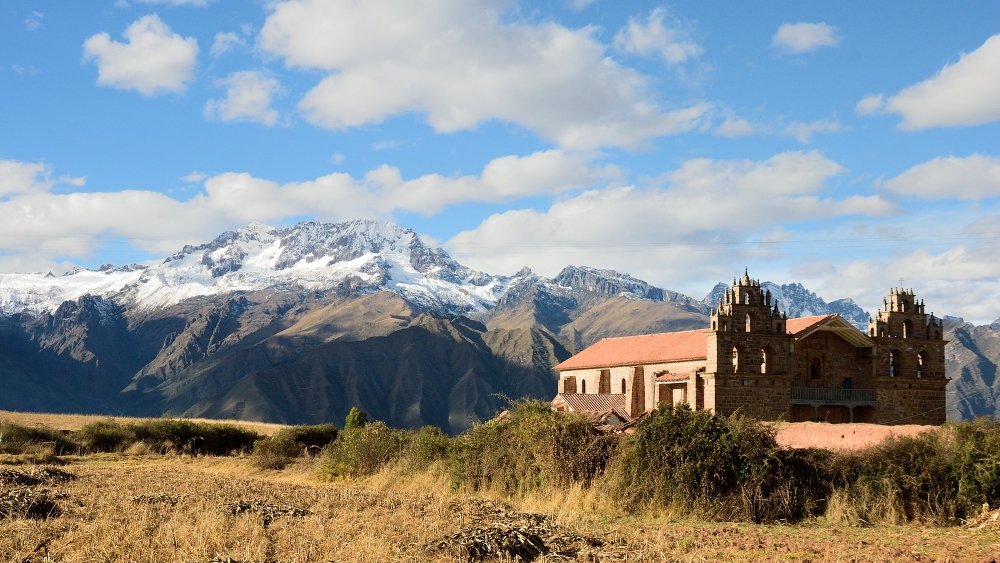Vilcabamba Mountain Range | Cusco
The Vilcabamba mountain range is located in South America, specifically in the territory of Peru. This mountain range extends mainly in the southeastern region of the country, in the departments of Cusco and Apurimac. It is known for being home to some of the highest mountains in Peru, as well as for its historical and archaeological importance, as it is home to several Inca sites, including the famous Machu Picchu.
It has a considerable altitude, with peaks exceeding 6,000 meters above sea level. Some of the highest mountains in this range include the Nevado Salkantay, which reaches an altitude of 6,271 meters, and the Nevado Veronica, which has an altitude of approximately 5,682 meters.
History of the Vilcabamba Mountain Range | Cusco
The history of the Vilcabamba mountain range is closely linked to the Inca civilization and its resistance to the Spanish conquest.
During the height of the Inca Empire, the Vilcabamba region was an important part of its territory, with numerous cities and ceremonial centers. However, when the Spanish began their invasion of the Inca Empire in the 16th century, the last legitimate Inca ruler, Manco Inca Yupanqui, retreated to the Vilcabamba region, establishing a new Inca capital there called Vilcabamba la Vieja, as a last bastion of resistance against the Spanish conquerors.
For approximately three decades, Vilcabamba became the center of Inca resistance, from where sporadic attacks were launched against the Spanish forces and the flame of resistance was kept alive. However, in 1572, the Inca leader Tupac Amaru I was captured and executed by Spanish forces, marking the symbolic end of Inca resistance in Vilcabamba.
Despite the fall of Vilcabamba, the Vilcabamba Mountain Range has retained its historical and cultural importance. Today, it is known for hosting some of the most important Inca archaeological sites, including the famous Machu Picchu, which was rediscovered by Hiram Bingham in 1911 and is believed to have been one of the last cities built by the Incas in their heyday. The Vilcabamba mountain range remains an important destination for tourism and archaeological research, as well as a symbol of the resilience and grandeur of the Inca civilization.

Which snow-capped mountains belong to the Cordillera de Vilcabamba?
The Vilcabamba mountain range has several important snow-capped peaks. Some of the most outstanding peaks include:
Nevado Salkantay: This is the highest peak in the Cordillera de Vilcabamba, with an altitude of approximately 6,271 meters above sea level. It is an impressive mountain and a popular destination for hikers making the Salkantay trek to Machu Picchu.
Nevado Veronica: With an altitude of around 5,682 meters, Nevado Veronica is another prominent peak in the Vilcabamba Range. It is located in the Urubamba River basin, near the town of Ollantaytambo.
Nevado Huacayhuilca: This mountain is located in the eastern part of the Cordillera Vilcabamba and has an altitude of approximately 5,364 meters above sea level.
These are just some examples of the peaks that are part of the Cordillera de Vilcabamba. The range is also home to a number of other peaks and mountains, many of which are popular with climbers and trekking enthusiasts due to their natural beauty and challenges.
Biodiversity of the Vilcabamba Mountain Range
What can be done in the Cordillera de Vilcabamba?
In the Vilcabamba Range, there’s a variety of activities you can enjoy, depending on your interests and adventure levels. Here are some options:
- Trekking and Hiking: The range offers a wide range of hiking and trekking routes for all skill levels. You can embark on the famous Salkantay Trek to Machu Picchu, which offers stunning views of the region’s nature and history. Other lesser-known but equally beautiful routes are also available for exploration.
- Rock Climbing: For climbing enthusiasts, the Vilcabamba Range offers a series of challenging peaks and rock walls to climb. From Nevado Salkantay to other lesser-known peaks, there are options for climbers of all levels.
- Cultural Visits: In addition to its natural beauty, the range also harbors a rich cultural history. You can explore Inca ruins and archaeological sites along your journey. Machu Picchu is the most famous, but there are also other less-visited yet equally fascinating sites to discover.
- Wildlife Watching: The Vilcabamba Range is home to a variety of unique flora and fauna species. You can enjoy birdwatching, look for animals such as the spectacled bear, vicuña, and Andean condor, and explore the diversity of wildlife in the region.
- Community-Based Tourism: Many local communities in the range offer experiential tourism opportunities where you can learn about the culture, traditions, and way of life of the people inhabiting these areas. This can include homestays, participation in agricultural activities, and local handicrafts.
Whether you prefer outdoor adventure activities, exploring history and culture, or simply relaxing and enjoying nature, the Vilcabamba Range offers something for everyone.














